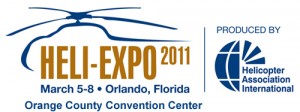Is the BizJet Back?
We actually look forward these days to reading the latest reports on business aviation.
Suddenly, upbeat trends and optimistic analyses dominate. Case in point: this story singling out Bombardier Aerospace’s performance as a harbinger of better times. JP Morgan’s Aerospace & Defense unit, as reported by Aviation Week, says Bombardier’s 74 net business jet orders in fourth quarter 2010 is the surest sign yet of an upswing in business jet demand.
We’re hardly unbiased here. We’ve been working with Bombardier and its fractional provider, Flexjet, for years. We know from experience that they do things right. It’s no surprise to see them leading business aviation to a stronger position.
A New Era
From our Wichita-based perspective, we expect that success to continue and to carry over to the other major business aircraft manufacturers, including Cessna and Hawker Beechcraft.
Challenges remain. The ground has shifted. Growth is strongest in larger-cabin, longer-range aircraft – such as Bombardier’s Global 5000 and Global XRS – while demand remains soft for piston aircraft. But business aviation thrives on change – it emerges from each downturn even stronger than before. And it looks like that’s beginning to happen.
